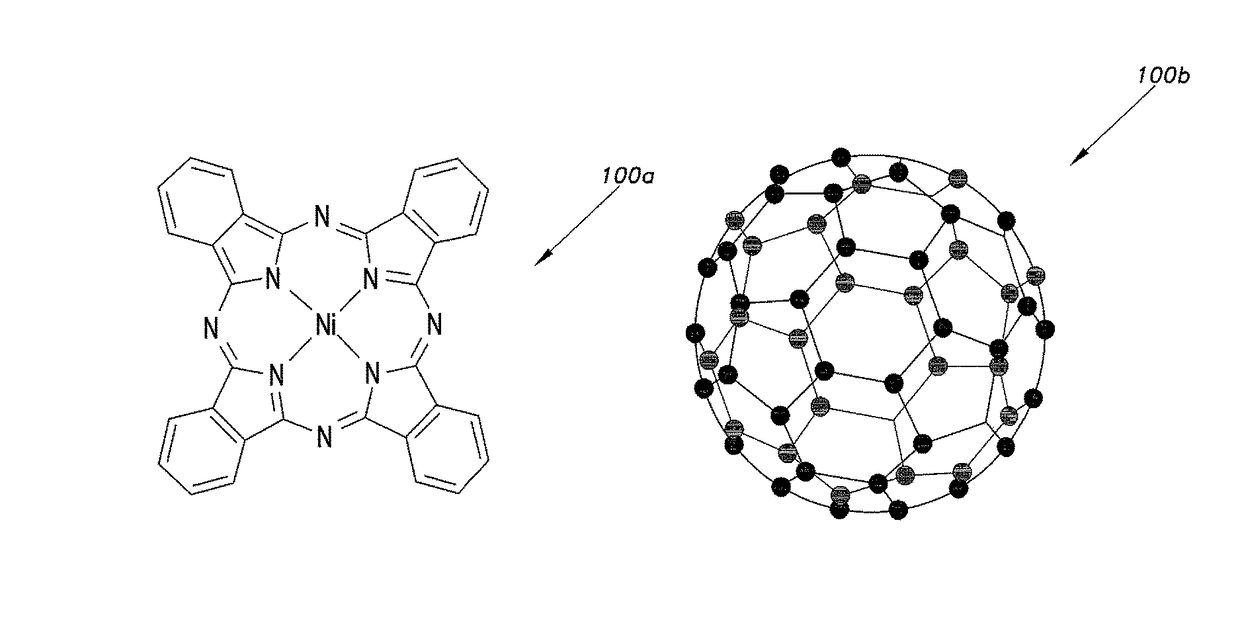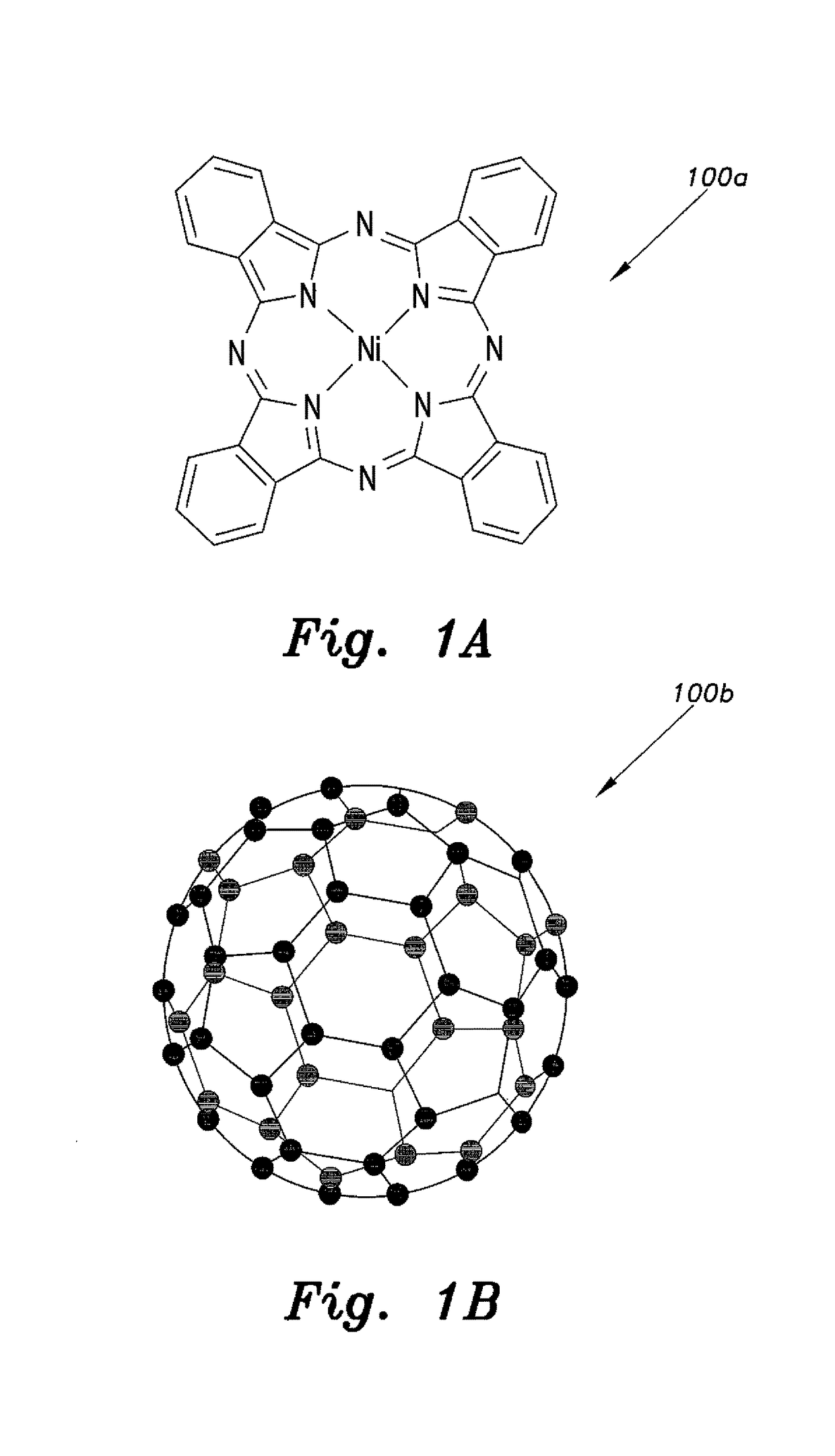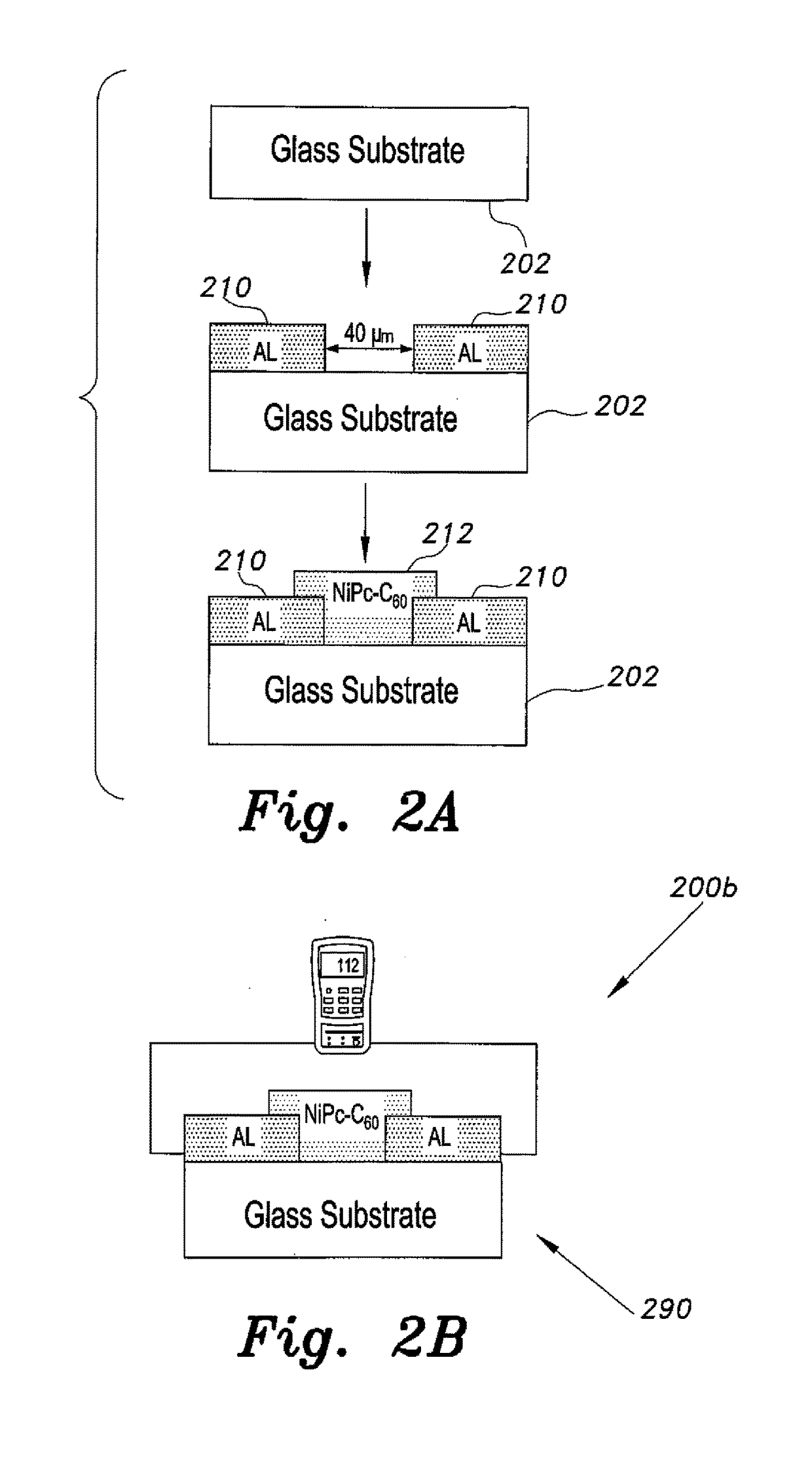Method of making thin film humidity sensors
a technology of humidity sensor and thin film, applied in the field of sensors, can solve the problems of high cost of maintenance, high operational power/temperature and high cost of sensor, ceramic-based sensors have problems of response and recovery time, sensitivity to smoke and dust,
- Summary
- Abstract
- Description
- Claims
- Application Information
AI Technical Summary
Benefits of technology
Problems solved by technology
Method used
Image
Examples
Embodiment Construction
[0036]The method of making thin film humidity sensors uses various low cost techniques. The thermal evaporation or drop casting techniques are used to fabricate NiPc-Fullerene based quick response humidity sensors with negligible hysteresis. FIG. 1A shows the molecular structure of NiPc (nickel phthalocyanine) 100a. FIG. 1B shows the molecular structure of C60 (Fullerene) 100b. The fabrication process is shown in FIG. 2A. Prior to the deposition of aluminum electrodes, a glass substrate 202 is cleaned by using acetone in an ultrasonic bath for 10 minutes. After cleaning, the substrate 202 is washed with de-ionized water and then dried. A gap is created between two electrodes by masking the glass substrate with copper wire. This assembly is plasma-cleaned for 5 minutes in a thermal evaporator (EDWARD 306). Subsequently aluminum (Al) thin films 210 are deposited on the assembly.
[0037]Next, for thermal vapor deposition of NiPc-C60 composite films 212, equal weights (1:1) of both materi...
PUM
| Property | Measurement | Unit |
|---|---|---|
| thickness | aaaaa | aaaaa |
| thickness | aaaaa | aaaaa |
| thickness | aaaaa | aaaaa |
Abstract
Description
Claims
Application Information
 Login to View More
Login to View More - R&D
- Intellectual Property
- Life Sciences
- Materials
- Tech Scout
- Unparalleled Data Quality
- Higher Quality Content
- 60% Fewer Hallucinations
Browse by: Latest US Patents, China's latest patents, Technical Efficacy Thesaurus, Application Domain, Technology Topic, Popular Technical Reports.
© 2025 PatSnap. All rights reserved.Legal|Privacy policy|Modern Slavery Act Transparency Statement|Sitemap|About US| Contact US: help@patsnap.com



